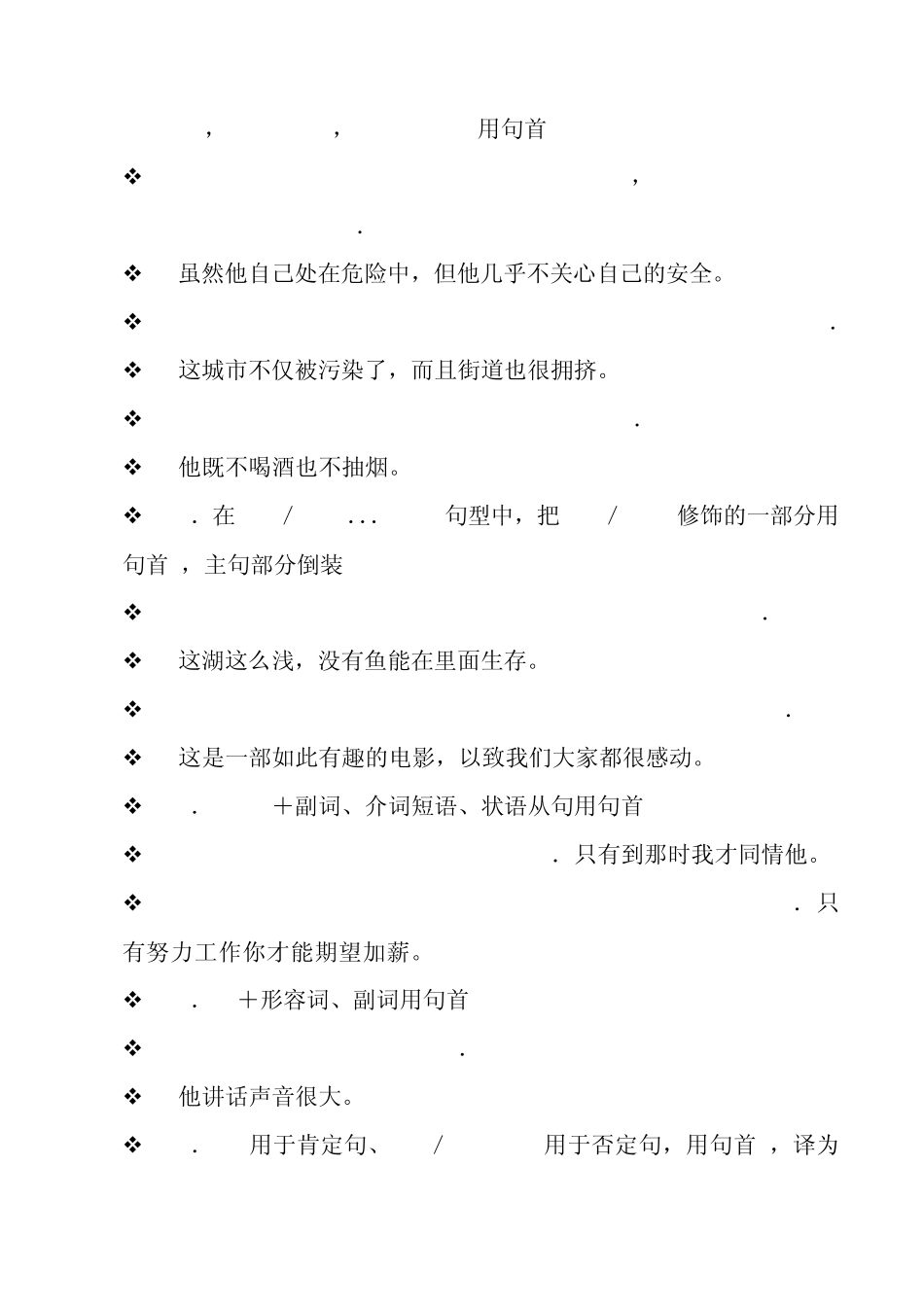英语语法知识:倒装句的构成 英语中,主语和谓语的语序通常是主语在前,谓语在后。 如果 “谓语或谓语的一部分+主语”,这样的句子就叫倒装句。倒装原因,一是语法结构上的需要(如疑问句),一是为了强调。倒装结构分为完全倒装和部分倒装。 一、完全倒装:将谓语动词完全移到主语前面 1.用于 there be(lie,stand,live,seem,appear,exist,come)中。 There is a book and two notebooks on the desk.桌子上有一本书和两个笔记本。 There stands a post office at the corner of the street.街的拐角处有一个邮局。 2.here,now,then,out,in,up,down,off,back,away用句首 Here is a letter for you. 有你一封信。 Then came the day of his examination. 接着他考试的那天到来了。 Down jumped the boy from the wall. 孩子从墙上跳了下来。 但当主语是人称代词时,主谓不能倒装。例如: Here she comes.她来了。 3.用于直接引语后面,点明说话人 “If you die,who will get your money?”asked Holmes.“如果你死了,谁会得到你的钱?”福尔摩斯问。 如果主语是代词,或谓语含有助动词、情态动词时,则不能倒装。例如: “I don't know her.”He will say.“我不认识她。”他会说。 4.为了保持句子平衡、衔接或为了强调表语或状语,可把介词短语、形容词、副词或分词提到主语前,用完全倒装语序 Among them was an engineer who had been working on that object for many years.他们当中有一位多年研究那个课题的工程师。 He came into a big room,in the middle of which stood a large table.他来到一个大房间,房间中央有一张大桌子。 South of the city lies a middle school.城市南边有一所中学。 Hanging on the wall was a beautiful picture.一幅漂亮的画挂在墙上。 二、部分倒装:只把助动词、情态动词或系动词放在主语之前,为部分倒装 1.用于疑问句中 Is he reading or playing?他在读书还是在写字? 2.否定词 little,not only,not until,never,seldom,barely(几乎不),never before,no sooner...than...,neither...nor...


